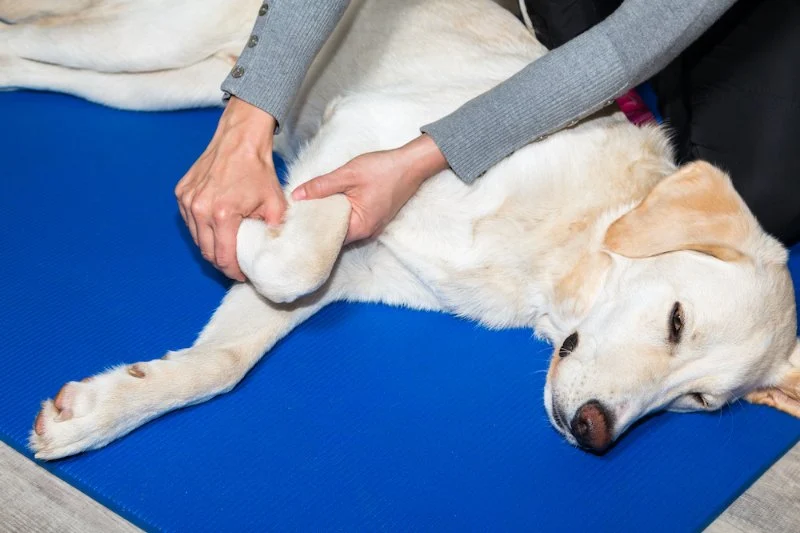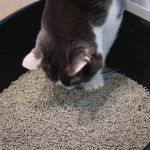
- 1-Understanding Joint Health in Dogs
- 2-Signs of Joint Issues in Aging Dogs
- 3-Effective Tips for Maintaining Joint Health in Dogs
- 4-Supplements and Nutrition for Joint Care
- 5-Real-Life Case Study: Managing Joint Health in Senior Dogs
1. Understanding Joint Health in Dogs
As dogs age, they experience natural wear and tear on their joints, which can lead to stiffness, discomfort, and a decrease in mobility. Joint health in dogs is crucial for maintaining their overall quality of life, especially in older dogs. The most common joint issues in aging dogs are arthritis and hip dysplasia, but joint problems can also occur due to other factors like obesity, injury, or genetics.
Understanding the importance of joint health and how it affects your dog’s movement and comfort is the first step toward ensuring they remain happy and healthy as they age. Proper joint care can improve their mobility, reduce pain, and increase their lifespan by promoting a more active lifestyle.

GOD Creations Patterson Peafowl Farm
RaefordHoke CountyNorth Carolina
257 Woodrow Ln, Raeford, NC 28376, USA
2. Signs of Joint Issues in Aging Dogs
Recognizing the early signs of joint issues in your aging dog is essential for taking action before the problem worsens. Here are some common signs to watch for:

Azteca Kennels & Pet Supplies
VictorvilleSan Bernardino CountyCalifornia
15191 7th St #5, Victorville, CA 92395, USA
2.1 Decreased Activity Level
If your dog is less enthusiastic about walks or playtime, it may be a sign that their joints are bothering them. Dogs with joint pain may be reluctant to engage in activities they once enjoyed.
2.2 Stiffness or Limping
Stiffness, particularly after rest or upon waking up, is another sign that your dog may be experiencing joint pain. Limping or favoring one leg is a clear indication that your dog is feeling discomfort in their joints.
2.3 Difficulty Climbing Stairs or Jumping
Aging dogs with joint issues often struggle with tasks that were once easy, such as jumping into the car, climbing stairs, or getting on the couch. If you notice your dog hesitating or struggling with these movements, it’s a red flag for joint problems.
2.4 Behavioral Changes
Dogs with joint pain may become more irritable or withdrawn due to discomfort. If your dog is normally friendly but is suddenly growling, snapping, or avoiding touch, this could be due to joint pain making them sensitive to being handled.
3. Effective Tips for Maintaining Joint Health in Dogs
As a responsible dog owner, there are several proactive steps you can take to support your dog’s joint health and prevent or minimize the effects of joint issues as they age:
3.1 Maintain a Healthy Weight
Excess weight puts additional stress on your dog’s joints, especially in older dogs. Keeping your dog at a healthy weight will help reduce strain on their joints and lower the risk of arthritis. Make sure to feed them a balanced diet and avoid overfeeding. Regular exercise can also help them maintain a healthy weight while keeping their joints active.
3.2 Provide Regular, Low-Impact Exercise
Regular exercise is essential for maintaining joint health. Low-impact activities such as walking, swimming, or light play can help keep your dog’s joints flexible and strong without causing excessive wear. Avoid high-impact exercises that could worsen joint pain or lead to injury.
3.3 Provide a Comfortable Resting Place
As your dog ages, they may spend more time resting. Ensure they have a comfortable, supportive bed that cushions their joints. Orthopedic beds are designed to relieve pressure on joints and provide added comfort for dogs with arthritis or joint discomfort.
3.4 Monitor Activity Levels and Adjust as Needed
While regular activity is important, it’s essential to adjust exercise routines based on your dog’s physical capabilities. Pay attention to their limitations, and avoid overexerting them. Shorter, more frequent walks are better than one long walk that may tire them out or cause joint strain.
4. Supplements and Nutrition for Joint Care
Proper nutrition is key to your dog’s joint health, and supplements can play a significant role in maintaining joint function as they age. Here are some recommended nutrients and supplements to support joint health:
4.1 Glucosamine and Chondroitin
Glucosamine and chondroitin are two of the most popular supplements used to support joint health in dogs. These natural compounds help repair cartilage, reduce inflammation, and alleviate joint pain. Many joint supplements for dogs contain both glucosamine and chondroitin, often combined with other ingredients like MSM (methylsulfonylmethane) to enhance their effectiveness.
4.2 Omega-3 Fatty Acids
Omega-3 fatty acids, found in fish oil and certain plant oils, have anti-inflammatory properties that help reduce joint inflammation and stiffness. Adding fish oil or an omega-3 supplement to your dog’s diet can improve their joint mobility and overall health.
4.3 Antioxidants
Antioxidants like vitamin E and vitamin C can help combat oxidative stress, which can exacerbate joint problems. Incorporating antioxidant-rich foods or supplements into your dog’s diet can promote healthy joints and reduce inflammation over time.
4.4 Joint-Supporting Dog Food
Many high-quality dog food brands offer formulas specifically designed to support joint health. These foods often contain added glucosamine, chondroitin, and omega-3 fatty acids, providing all-in-one joint support through a complete diet.
5. Real-Life Case Study: Managing Joint Health in Senior Dogs
Let’s take a look at a real-life example of how one dog owner successfully managed their aging dog’s joint health:
5.1 Bella’s Journey: A Senior Dog's Joint Care
Bella, a 10-year-old Labrador, began showing signs of joint discomfort as she aged. Her owner, Jane, noticed Bella was slower to get up in the mornings and struggled with stairs. After a veterinary visit, Jane learned that Bella had early-stage arthritis in her hips.
Jane adjusted Bella’s diet to include joint supplements with glucosamine and chondroitin and added fish oil to her meals. She also modified Bella’s exercise routine to include short, low-impact walks and swimming sessions. After a few months, Bella’s mobility improved significantly, and she seemed more energetic and comfortable.
This case shows how proactive joint care and the right diet and exercise plan can help senior dogs live more comfortably, even with joint issues.







 Majestic Aquatics4.0 (28 reviews)
Majestic Aquatics4.0 (28 reviews) Pet Supermarket4.0 (394 reviews)
Pet Supermarket4.0 (394 reviews) Petco4.0 (633 reviews)
Petco4.0 (633 reviews) Backyard Birds4.0 (89 reviews)
Backyard Birds4.0 (89 reviews) Wet World4.0 (454 reviews)
Wet World4.0 (454 reviews) Petco4.0 (898 reviews)
Petco4.0 (898 reviews) How to Stop Your Kitten from Eating Litter: Tips and Solutions
How to Stop Your Kitten from Eating Litter: Tips and Solutions The Best Toys for a Kitten's Teething Pain - Omnia Pet
The Best Toys for a Kitten's Teething Pain - Omnia Pet How Dogs Understand Human Language: The Science of Canine Cognition
How Dogs Understand Human Language: The Science of Canine Cognition How to Stop a Kitten from Bullying an Older Cat
How to Stop a Kitten from Bullying an Older Cat The Science Behind Why Cats Love Boxes and Small Spaces
The Science Behind Why Cats Love Boxes and Small Spaces Understanding Kitten Vocal Cord Development: A Complete Guide
Understanding Kitten Vocal Cord Development: A Complete Guide